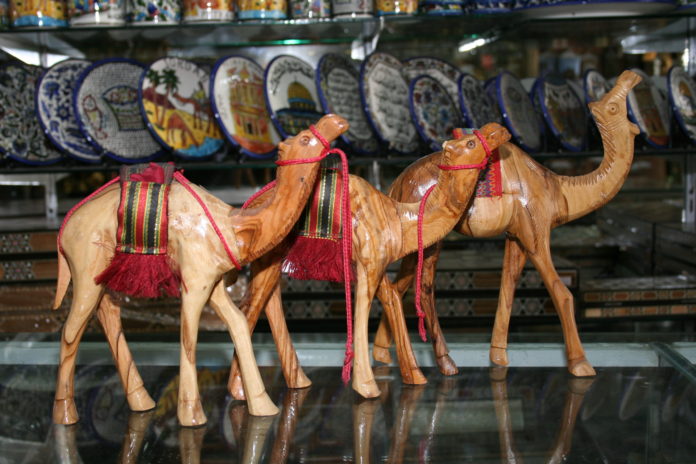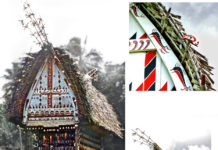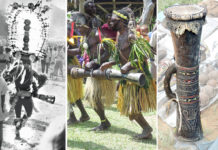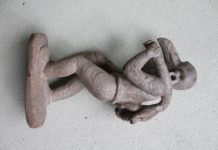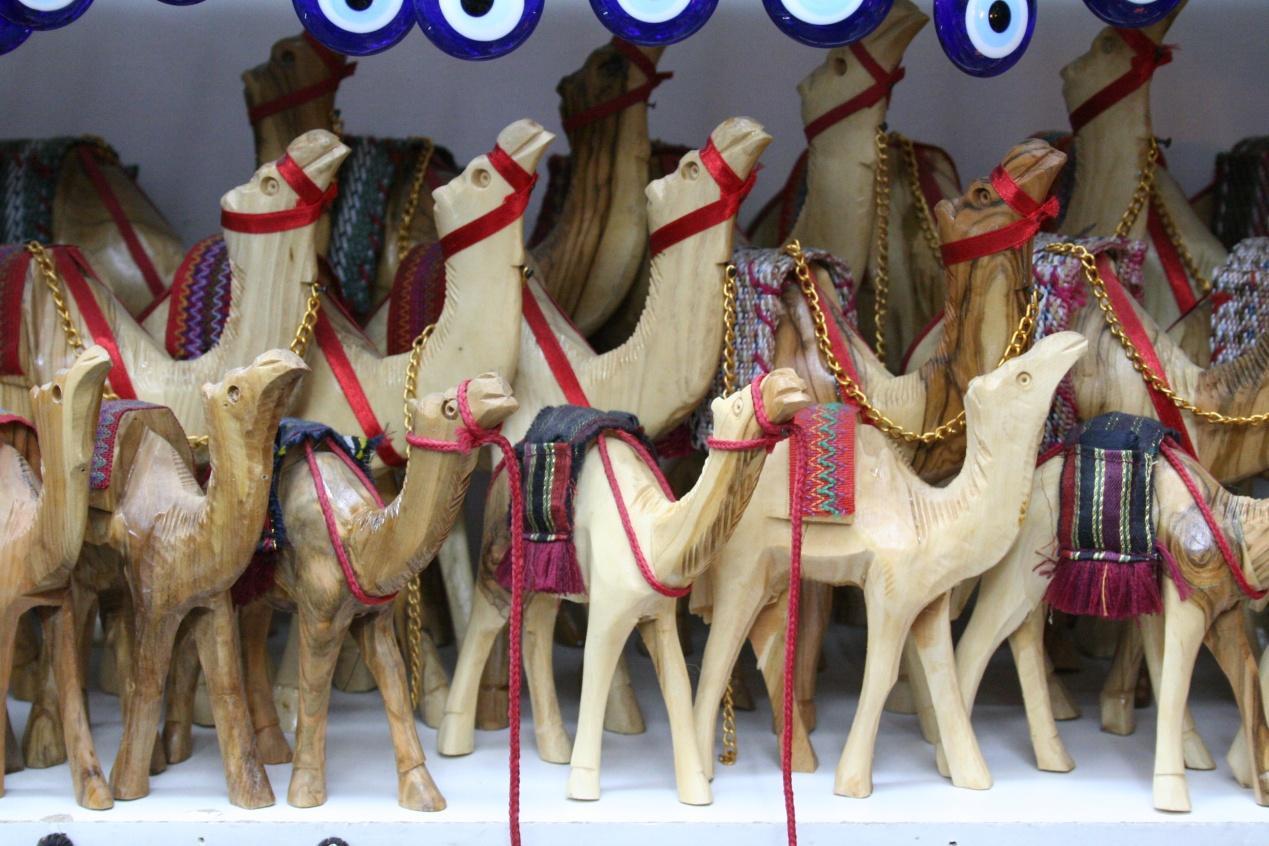
Olive wood carving art, photo: Adeeb Atwan
Olive wood carving (نحت خشب الزيتون, Nahet Khasab Al Zaytoon) utilises local raw materials to produce works of art. This traditional handicraft attracts tourists and generates good a income for artists. As a craft unique to Jordan, it is passed down through generations. The origins of olive wood carving date back at least to the sixteenth century or even earlier in the Christian families of the Bethlehem.
Olive wood in large quantities is available in Jordan. In winter, the olive trees are pruned after harvesting. This process provides an annual sustainable resource of olive wood for craftspersons to work on throughout the year. They then prepare the wood and stock it up in suitable conditions for six months before it is ready for use. Olive wood lends itself to artistic expression: this is evident in the beauty of random layers and unique texture that appear after the artifacts are carved and polished.
The olive tree is blessed in Islam and Christianity. Its trunks and branches are used to make spiritual angels, boxes, picture frames, and covers for historical and old books, candle holders, vases and Christmas ornaments. Camels and palm trees are also used to represent Jordan’s environment.
The creation of olive wood carvings requires skill in measurement, carving and finishing. The designs are developed by the craftspersons themselves using carving and engraving hand tools. Olive wood artifacts are usually used as souvenirs.
The estimated number of wood carvers across Jordan is more than 100. The cities of Jarash, Ajloun, Madaba and Amman are well known for the creativity of their craftspersons in carving the olive wood. These products are also available in different handicrafts stores, such as visitor centers and showrooms of hotels in Jordan.
Faisal Lababneh is one of the wood carving masters from Houfa village in the northern part of Jordan. Lababneh follows a family tradition of wood carving. His artwork started to gain recognition in the region from 1994 when he began showing his wood carvings in festivals and cultural events. He often uses Arabic calligraphy to decorate his olive wood artworks.

Mr. Lababneh exhibiting his olive wood artworks, photo: Saleem Ayesh


